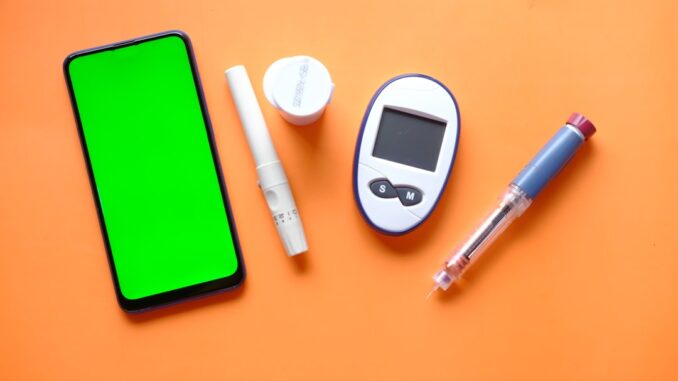
Summary
Continuous glucose monitors (CGMs) are transforming diabetic ketoacidosis (DKA) management. They offer a less invasive, more comfortable, and potentially more effective way to monitor glucose levels compared to traditional fingerstick methods. This advancement promises to improve patient care, optimize ICU resources, and enhance overall DKA management.
Safeguard patient information with TrueNASs self-healing data technology.
** Main Story**
Diabetic ketoacidosis, or DKA, it’s a real problem. It’s a serious complication of diabetes that can happen when your body doesn’t have enough insulin. Basically, your body starts breaking down fat for energy, and that creates a build-up of acids in your blood. Not good. You might see symptoms like crazy thirst, feeling weak, nauseous, and just plain confused. And, honestly, DKA sends a lot of people to the hospital, and often they’re stuck in the ICU. All those hospital stays? They add up fast, costing the healthcare system a fortune. Right now, the standard way to manage DKA involves sticking your finger for blood glucose readings, usually every hour. Now, I don’t know about you, but that sounds like a pain, both for the patient and the nurses.
CGMs: A Gentler Approach
Enter continuous glucose monitors, or CGMs. What if, instead of all those fingersticks, we had a tiny sensor under the skin that constantly checked your glucose? Sounds much better, right? These CGMs are small—they’re usually placed on your arm or stomach, and they measure glucose in the fluid around your cells. The device then sends the info wirelessly to a receiver, so you get real-time updates on your glucose levels and trends. Plus, recent studies show they work even when someone has DKA, despite the fact that people who have DKA are often dehydrated. Dehydration being a concern for CGM accuracy, you see. In fact, one study showed that CGMs were just as accurate as those fingersticks. More importantly, they could even detect rapid drops in blood sugar better – a big win for preventing hypoglycemia during DKA treatment.
The Upsides of Using CGMs for DKA
So, why should we switch to CGMs for DKA management? Well, here’s a few good reasons:
-
More Comfortable Patients: Let’s face it, no one likes getting poked all the time. CGMs ditch the constant fingersticks, which should make for happier patients. And who doesn’t want that?
-
Better Accuracy, Faster Detection: CGMs provide continuous glucose readings. What does that mean? It means you can spot those dangerous ups and downs in glucose levels much earlier. And it means you can jump on the issue quicker. Spotting those quick drops in blood glucose? That could stop hypoglycemia from happening. Hypoglycemia being a really scary complication of DKA.
-
Lighter Workload for Nurses: Nurses are busy. Really busy. Sticking fingers every hour takes up a lot of their time. CGMs take over that monitoring, so nurses can focus on other important stuff, like actually taking care of their patients.
-
Smarter Use of ICU Resources: Think about it: if we manage DKA better, maybe people won’t need to stay in the ICU as long, or at all. Less ICU time means more beds available and less strain on resources, which is huge considering how expensive DKA hospitalizations are.
-
Better Outcomes: At the end of the day, we want people to get better. With better and more timely glucose data, CGMs should improve DKA management and get people back on their feet faster.
What’s Next?
CGMs in DKA? It’s still fairly new, but so far, things are looking promising. More studies are needed, sure. We need to know the long-term effects on patient outcomes, resource use, and costs. But, you know, the early results are pretty exciting. It’s possible CGMs could become the go-to for DKA management. And, on a personal note, I have seen the value of technology like CGMs, my grandfather used a CGM in his battle with diabetes. His only regret was not having access to the technology sooner.
And it’s not just CGMs. As tech gets better, we’ll likely see AI-powered insulin systems and other cool innovations that’ll make diabetes management even easier. It might even mean a future where diabetes is less of a burden and more of something people just manage. Sounds good, right?


So, fewer finger pricks and happier patients, huh? I’m all for anything that makes hospital stays less medieval. Wonder if CGMs could be adapted to monitor other critical metabolic markers in real-time? Imagine the possibilities for proactive health management!
Great point! The potential for CGMs to monitor other metabolic markers is huge. Real-time data on things like lactate or ketones could revolutionize proactive health management, not just in DKA, but for a range of conditions. The future of personalized medicine is exciting!
Editor: MedTechNews.Uk
Thank you to our Sponsor Esdebe
The reduced burden on nursing staff is a significant advantage. Could this also lead to more efficient workflows and potentially allow for a greater focus on other critical aspects of patient care in the ICU?